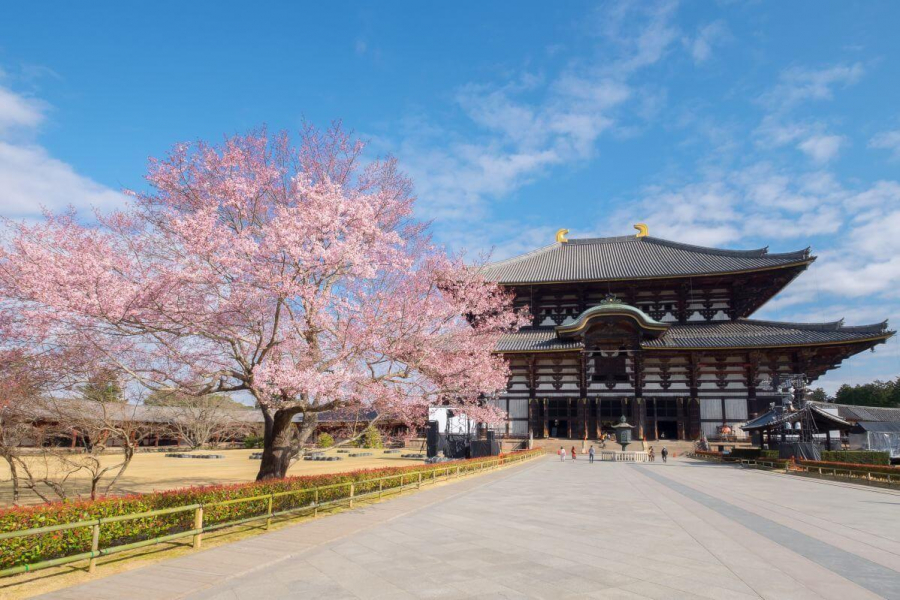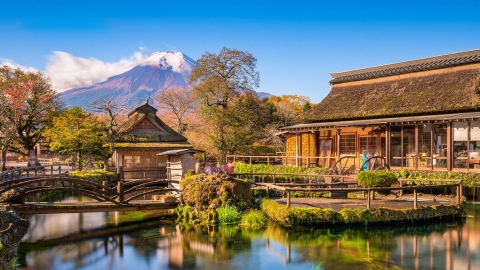View Mount Fuji on the bullet train from Tokyo to Kyoto
Travelling around Japan is no longer difficult thanks to the Shinkansen bullet train network. With speeds of up to 300km/h, it takes just over two hours to travel from Tokyo to southern cities like Kyoto and Osaka. Choose a window seat to enjoy beautiful views of Mt. Fuji along the way.
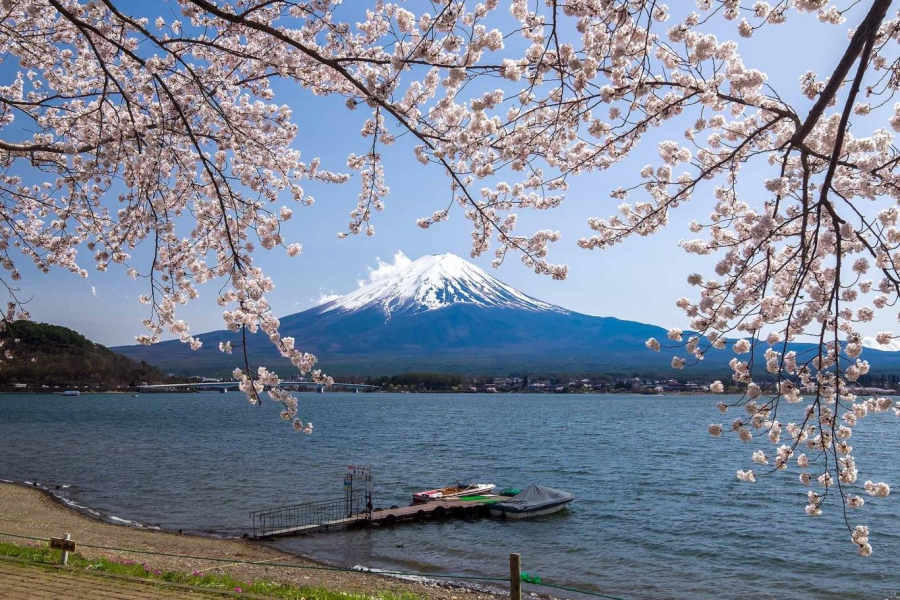
Attend the Cherry Blossom Festival in spring
Cherry blossoms (sakura) are revered in Japan. The delicate and vulnerable cherry blossoms are seen as a symbol of life, so many Japanese families gather and hold hanami (outdoor parties under the cherry blossoms) when they are in full bloom in the spring.
During this time, cherry blossom festivals are also held across the country, especially in central parks of cities. Among them, the most famous is the cherry blossom festival in the southern city of Matsuyama, where cherry blossoms bloom against the historic backdrop of Matsuyama Castle.
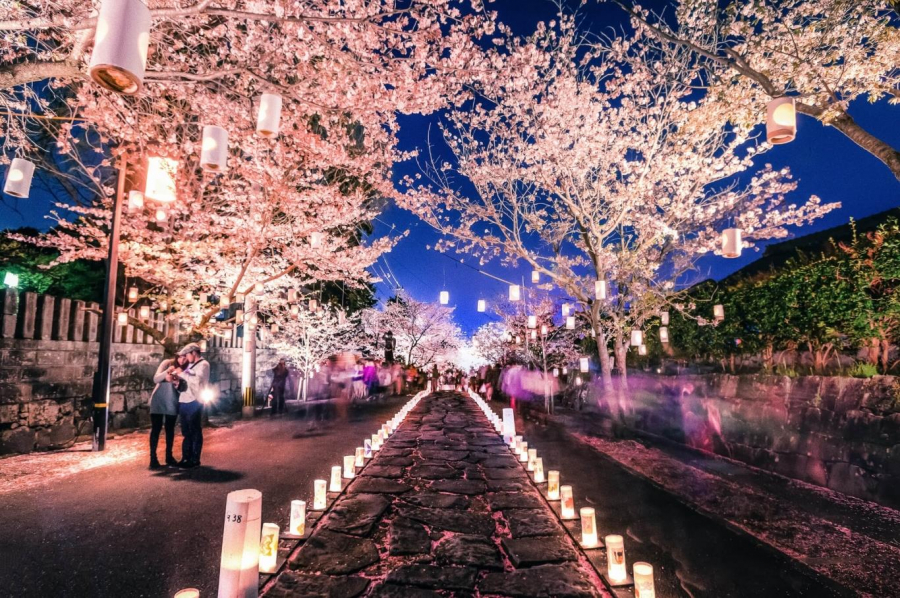
Tashirojima - The "Kingdom" of Cats
Tashirojima is a small, rural island off the coast of central Ishinomaki City in Miyagi Prefecture. Tashirojima is also known as “cat island” because it is home to hundreds of cats that are cared for and worshipped by the island’s residents. The cats were originally brought here to help control pests around silkworm farms. Since then, their numbers have grown so rapidly that they have outnumbered the island’s human population.
Cat lovers from all over want to visit Tashirojima, it takes an hour ferry ride from central Ishinomaki. The ferry stops at two villages around Odomari Port in the north and Nitoda Port in the south. Cats here freely roam the streets and enjoy the attention of tourists. This is truly a paradise for “cat fanatics”.

Quiet space in Sagano Bamboo Forest
Kyoto is famous for its many meticulously maintained temples, shrines, and historic gardens. The most famous of these is the Sagano Bamboo Forest. If you’ve ever clicked on a list of “places to see before you die” or “most beautiful forests in the world,” chances are you’ve seen pictures of Sagano.
Located in the Arashiyama district on the outskirts of the city, the forest is a great destination for those who love fairytale sights and beautiful sounds. The rustling of bamboo leaves in the wind and the scent of young bamboo stalks are sure to cleanse your soul and create unforgettable memories. The forest also has manicured areas and is a short walk from Tenryū-ji Temple. Tenryū-ji is one of the five great temples of Kyoto and is a UNESCO World Heritage Site.

Visit the Great Buddha in Kamakura
The Great Buddha (or Daibutsu) of Kamakura is one of Japan’s most fascinating historical sites. This giant bronze statue is a representation of Amida Buddha and is located in the grounds of Kotoku-in Temple in Kamakura. Dating back to 1252, the statue was originally gilded and placed inside the main temple. However, after the tsunami of September 20, 1492, the building was destroyed, leaving only the statue standing outdoors. Traces of gold can now be found around the statue’s ears.
The Daibutsu in Kamakura is the second largest Buddha statue in Japan, weighing in at 121 tons and standing 13.35 meters tall. For just a 20 yen donation, visitors can go inside to see how the statue was cast. This unique experience will make your trip to Japan more memorable.
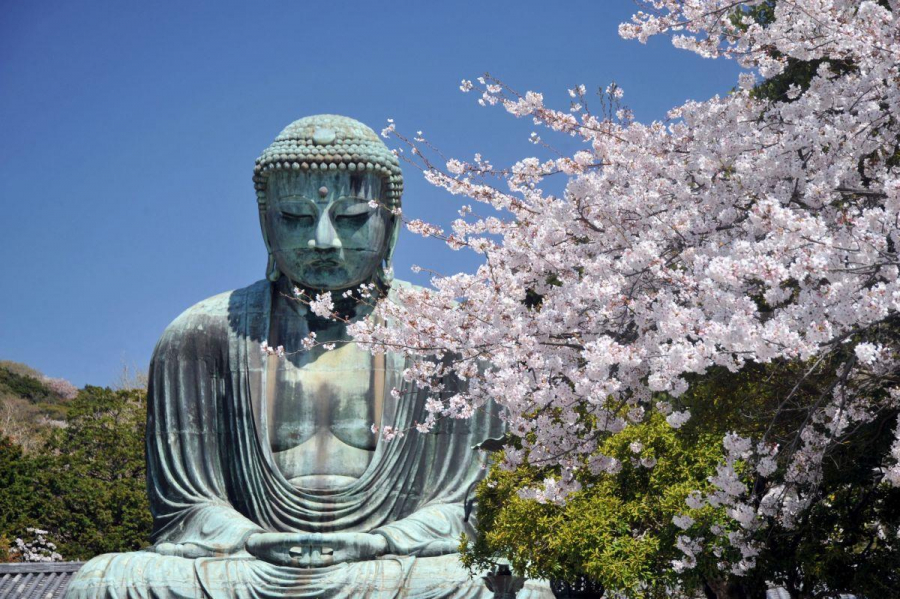
Explore the Torii gate of Fushimi Inari-Taisha Shrine
Fushimi Inari-taisha is one of Japan’s most famous shrines dedicated to the god of rice, Inari. The magical, seemingly endless path of more than 5,000 bright orange torii gates that wind through the hills behind Fushimi Inari-taisha makes this shrine a must-see when traveling to Japan. Since Inari’s messenger is the fox, you will see foxes everywhere, at the shrine and along the way. Sometimes the foxes even carry keys in their mouths, representing the keys to rice stores in ancient times.

Enjoy modern art and shopping at Roppongi Hills
Opened in 2003, Roppongi Hills is a cultural and residential project built to revitalize Tokyo's Roppongi neighborhood. Today, Roppongi Hills features numerous contemporary art museums and galleries; a large shopping and restaurant complex; an outdoor observation deck on the top floor of the Mori Tower with views of the Tokyo skyline; and even a small oasis called Mori Garden, built in the style of a traditional Japanese landscape garden with beautiful trees and cherry blossoms, is one of the best examples of a "city within a city" that you should experience when visiting Tokyo.

Soak in natural hot springs
Natural hot springs are scattered throughout the Japanese countryside and are considered part of the local culture. The world's oldest hotel, Nishiyama Onsen Keiunkan, is located in Yamanashi Prefecture and has been privately operated for over 1,300 years. The hotel served aristocratic patrons such as samurai, members of the shogunate, or the ruling class of Japan's former military.
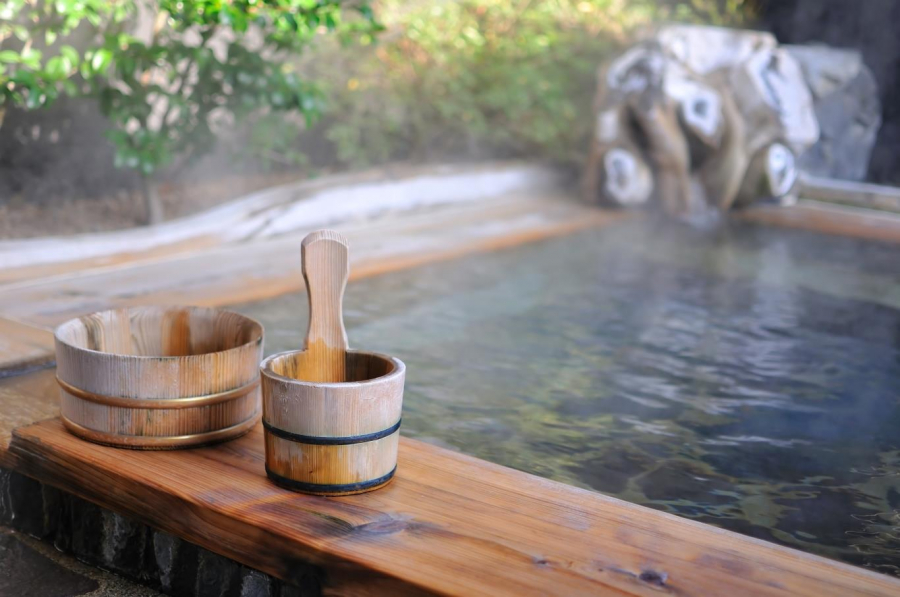
Immerse yourself in nature at Meiji Shrine
Also in the Harajuku area, close to Takeshita Street, is Meiji Shrine. Meiji Jingu is the shrine where the Emperor of the Meiji Dynasty worships the Empress of Japan. Built in 1920, this place always ranks first in the number of people coming to worship at the beginning of the year. It has the largest wooden torii gate in Japan, 12 meters high and 17 meters wide.
Once you step through the gate, you will feel as if you have left the city and enjoy the quiet, fresh air thanks to the lush green trees that stretch all the way to Omotesando. There are about 100,000 trees planted here, all of which were gifts from other parts of Japan.
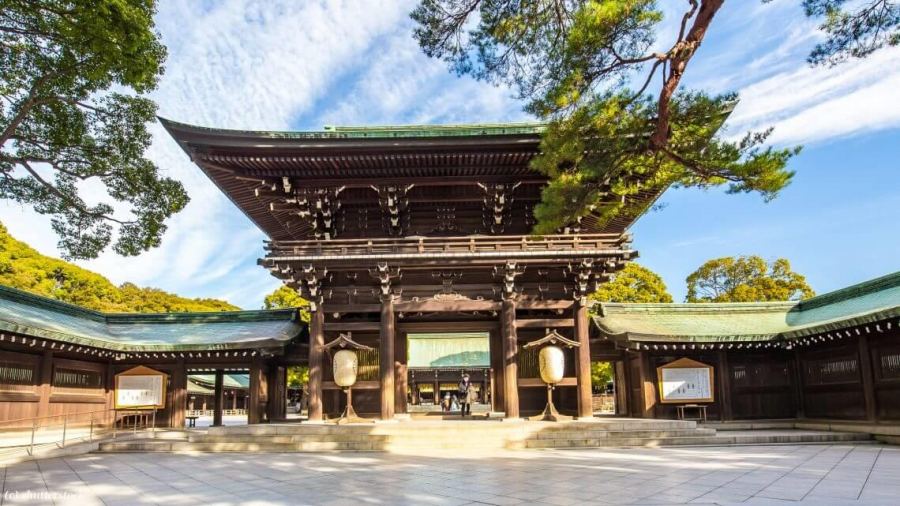
Pray for good luck at Tōdai-Ji Temple
As the former capital of Japan, Nara became home to many important Buddhist and Shinto relics. Among them, Tōdai-ji (Eastern Great Temple) is the most famous temple of the Huayan sect. The main hall (Daibutsuden) is the largest wooden structure in the world, built in 752. It houses a bronze statue of Vairocana Buddha, also a record weight of 500 tons.
You can also see tame deer from the nearby Nara National Park roaming the temple grounds. Deer are protected animals in Japan's two main religions. In Shinto, they are messengers and messengers for the gods. In Buddhist history, Shakyamuni Buddha gave his first sermon at Sarnath. The peaceful atmosphere of Todai-ji makes anyone who comes here feel calm and peaceful.
